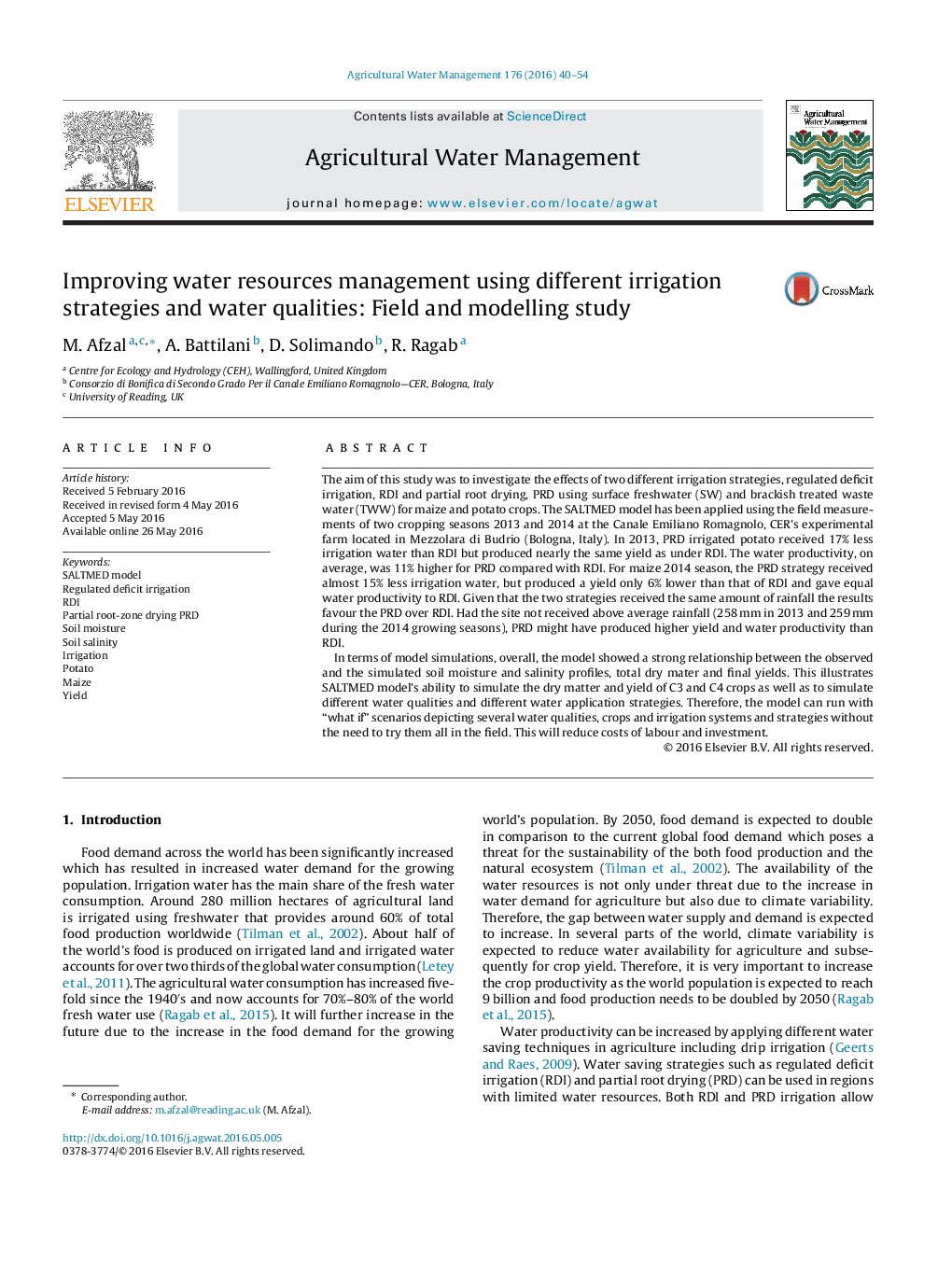| کد مقاله | کد نشریه | سال انتشار | مقاله انگلیسی | نسخه تمام متن |
|---|---|---|---|---|
| 4478233 | 1622904 | 2016 | 15 صفحه PDF | دانلود رایگان |
• The SALTMED modelling results illustrated that the model can simulate reasonably well the soil moisture content, soil salinity, dry matter and final crop yields.
• Water saving irrigation strategies like PRD and RDI almost produced similar crop yields and total dry matter with all treatments.
• PRD type irrigation strategy used between 15–17% less water than RDI.
• Water productivity was slightly higher for the PRD in comparison with the RDI irrigation strategy.
The aim of this study was to investigate the effects of two different irrigation strategies, regulated deficit irrigation, RDI and partial root drying, PRD using surface freshwater (SW) and brackish treated waste water (TWW) for maize and potato crops. The SALTMED model has been applied using the field measurements of two cropping seasons 2013 and 2014 at the Canale Emiliano Romagnolo, CER’s experimental farm located in Mezzolara di Budrio (Bologna, Italy). In 2013, PRD irrigated potato received 17% less irrigation water than RDI but produced nearly the same yield as under RDI. The water productivity, on average, was 11% higher for PRD compared with RDI. For maize 2014 season, the PRD strategy received almost 15% less irrigation water, but produced a yield only 6% lower than that of RDI and gave equal water productivity to RDI. Given that the two strategies received the same amount of rainfall the results favour the PRD over RDI. Had the site not received above average rainfall (258 mm in 2013 and 259 mm during the 2014 growing seasons), PRD might have produced higher yield and water productivity than RDI.In terms of model simulations, overall, the model showed a strong relationship between the observed and the simulated soil moisture and salinity profiles, total dry mater and final yields. This illustrates SALTMED model’s ability to simulate the dry matter and yield of C3 and C4 crops as well as to simulate different water qualities and different water application strategies. Therefore, the model can run with “what if” scenarios depicting several water qualities, crops and irrigation systems and strategies without the need to try them all in the field. This will reduce costs of labour and investment.
Journal: Agricultural Water Management - Volume 176, October 2016, Pages 40–54
